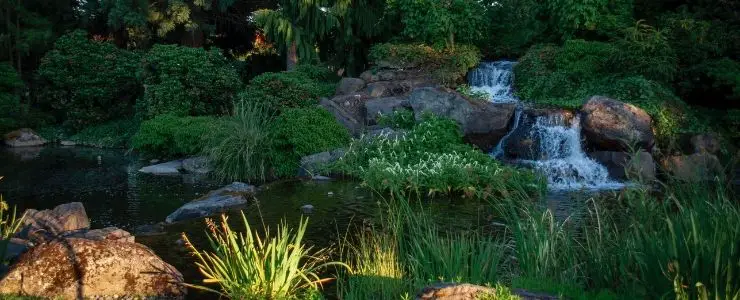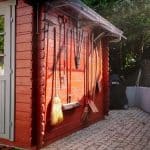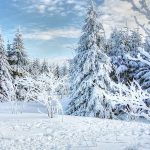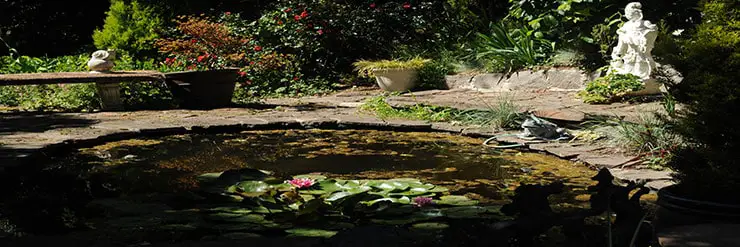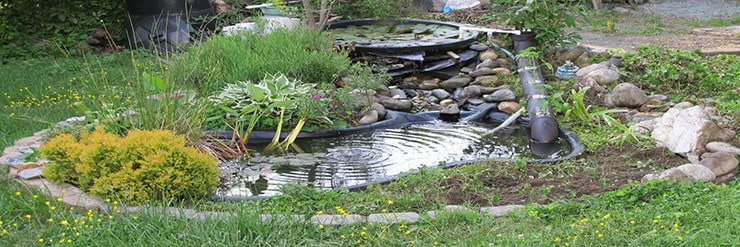A pond can and a backyard pond be a great addition to your home – it can provide a relaxing spot for you to relax, and it can also be a great place for wildlife to thrive. But what if you want your pond to do more? Can a pond be an ecosystem?
A pond can be considered an ecosystem IF it contains living plants, animals, and the food chain connecting these things. Therefore, ponds and garden ponds can actually be ecosystems. A pond can support a wide variety of plant and animal life.
with the help of some plants and animals, you can create a backyard pond that functions as its own mini-ecosystem. Keep reading to learn more!
Can a pond be an ecosystem
Yes, a pond can be an ecosystem. in fact, any standing water body can be an ecosystem, including lakes, rivers, and wetlands.
A pond is a great place to start a backyard ecosystem because it provides a habitat for many different species of plants and animals. A well-balanced pond will have plenty of both predators and prey, which helps to keep the population of aquatic organisms under control.
A pond can also provide a valuable source of food for many different species of animals, including birds, mammals, and reptiles.
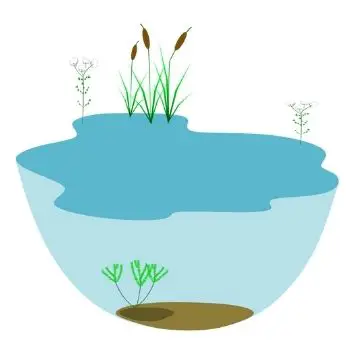
A pond is a great way to enjoy nature right in your backyard, and it can also be a valuable tool for ecological research.
What are the components of a pond ecosystem
A pond ecosystem is made up of three basic components: plants, animals, and microorganisms.
Plants provide a habitat for animals, they produce oxygen, and they help to purify the water.
Animals include all the creatures that live in the pond, including fish, amphibians, insects, and spiders.
Microorganisms include bacteria, algae, and protozoa. They are responsible for breaking down organic matter, which helps to keep the pond healthy.
What is a pond ecosystem food chain
A pond ecosystem food chain is a simplified model of how the different species in a pond interact with each other. it shows how each organism depends on the others for food and survival.
The food chain starts with the producers, which are the plants. They produce energy from sunlight and use it to create glucose, which is the basic building block of all life.
The primary consumers are the herbivores, which eat the plants. They convert glucose into protein and other nutrients to support their own growth.
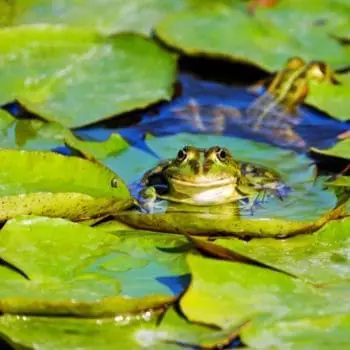
The secondary consumers are the carnivores, which eat the primary consumers. They convert the protein and other nutrients into energy to support their own growth.
The tertiary consumers are the top predators, which eat the secondary consumers. They convert the energy into storage, which helps them to survive during times of famine.
Which type of ecosystem is a pond
A pond can be a freshwater or saltwater ecosystem. It can also be a terrestrial or aquatic ecosystem. A pond is usually a small body of water, but it can be large enough to be called a lake.
A garden pond can be a freshwater or saltwater ecosystem. They are often home to a variety of plants and animals, including fish, amphibians, insects, and turtles. Garden ponds can be a great way to add beauty to your backyard, while also providing a habitat for wildlife.
Is a freshwater pond an ecosystem
A freshwater pond can be an ecosystem, and in fact, many ponds are. In general, an ecosystem is a community of living things and their physical environment. The living things in an ecosystem can be classified into three groups: producers, consumers, and decomposers
Can a small pond be an ecosystem
Yes, a small pond can be an ecosystem. In fact, anybody of water can be an ecosystem, from a tiny puddle to a vast ocean.
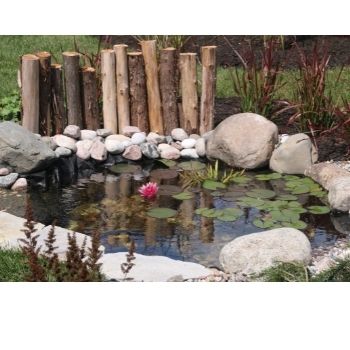
An ecosystem is a community of living things and the environment in which they live. The living things in an ecosystem include plants, animals, and microorganisms such as bacteria and fungi. The environment includes the air, the water, and the soil.
Ecology is the study of ecosystems. Ecologists study how living things interact with each other and with their environment. They also study how human activities can affect ecosystems.
Ecosystems are important because they provide us with many services. Services provided by ecosystems include
What is the importance of a backyard pond ecosystem
A pond ecosystem can provide many ecological benefits to a backyard. For example, ponds can provide a habitat for fish, amphibians, and other aquatic creatures. Ponds can also help control mosquitoes and other insect pests.
Additionally, ponds can help improve water quality by acting as a natural filter. Finally, ponds can be aesthetically pleasing additions to a backyard.
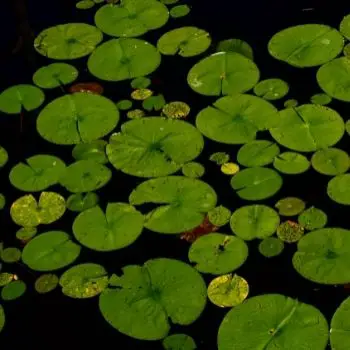
Ponds are hugely important for the environment, and many people don’t even realize it. By having a pond in your backyard, you can provide a habitat for many different types of creatures
What animals live in a pond ecosystem
A pond ecosystem is a home to a variety of animals, including amphibians, reptiles, fish, and invertebrates. Amphibians, such as frogs and toads, are especially common in ponds. Some common reptile species include turtles and snakes.
Fish can be found in nearly any body of water, and some of the most common fish species in ponds include bass, sunfish, and catfish. Invertebrates, such as dragonflies and crayfish, are also common in ponds.
Many of these animals play important roles in the functioning of the pond ecosystem. For example, amphibians help control the populations of insects and other small invertebrates, while fish eat aquatic plants and help keep the water clean.
Related article:
What affects the health of a pond ecosystem
There are several factors that can affect the health of a pond ecosystem, including climate, land use, and human activity. The most important factor is usually climate. A pond’s health can be affected by changes in temperature, precipitation, and humidity.
For example, a drought can cause a pond to become too dry and the animals that live there may die. Land use can also affect a pond’s health. Development or deforestation in the area can pollute the water or change the way rainwater flows into the pond. Human activity can also have a negative impact on ponds. Fishing, boating, and swimming can disturb the ecosystem and introduce pollutants into the water.
It’s important to be aware of these factors and how they can impact a pond’s health so that we can take steps to protect these valuable ecosystems.
What affects the health of a garden pond ecosystem
There are many factors that can affect the health of a garden pond ecosystem. The most important factor is the water itself. It needs to be clean and clear, with a moderate pH level and balanced levels of dissolved oxygen and carbon dioxide.
The water should also be at the correct temperature for the species of fish and plants in the pond.
The environment around the pond is also important. The pond should be in a sunny location, with plenty of shade for the fish.
It should also be situated away from buildings and other objects that could cast a shadow on the water or create turbulence. The surrounding area should be free of pollutants such as pesticides and fertilizers.
How do you build a garden pond ecosystem
The first step is to choose a location for your pond. The pond should be in an area that gets direct sunlight for at least six hours a day. Next, you’ll need to decide on the size and shape of your pond.
The recommended size is between 1,000 and 3,000 gallons, but you can make it any size you want. The shape of the pond is up to you, but it’s a good idea to include some areas that are shallow and some areas that are deep.
Now that you’ve chosen a location and size for your pond, it’s time to start building it. The first step is to level the ground where the pond will be located. Next, you’ll need to add a layer of rocks to the bottom of the pond.
These rocks will help to stabilize the ecosystem and will also provide a place for plants to grow. Then, you’ll need to add a layer of soil and compost. This will provide nutrients for the plants and help to keep the water clean.
The next step is to add the plants. There are a variety of plants that can be used in garden ponds, including lilies, papyrus, and rushes.
Be sure to include a variety of plants so that there is something to eat for all of the different types of fish. You can also add some decorative rocks and other features to your pond.
Finally, it’s time to add the fish. You can choose from a variety of different fish, including koi, goldfish, and trout. Be sure to add enough fish so that they will be able to eat the bugs that live in the pond. The pond is now ready for use! Enjoy watching the plants and fish grow and thrive in their new ecosystem.
Wrap up
So, can a pond be an ecosystem? A garden pond is an ecosystem and can be a beautiful and relaxing addition to your backyard, but it’s also important to remember that it’s a living ecosystem.
The health of the pond depends on the water itself being clean and clear, with balanced levels of dissolved oxygen and carbon dioxide. The environment around the pond is also important, with plenty of sun and shade for the fish and no pollutants. The pond should also be stocked with a variety of plants and fish to create a healthy ecosystem. With a little bit of care, your garden pond can be a beautiful and thriving ecosystem for years to come.

